Streamlining Production Lines for Better Results
Are you struggling with inefficiencies in your manufacturing process? Do bottlenecks plague your production lines, hindering your ability to meet customer demand and maximize profitability? Many businesses face these challenges, but with the right strategies and a focus on continuous improvement, significant gains are achievable. This article breaks down practical steps you can take to optimize your production lines, improve workflow, and achieve better results.
Key Takeaways:
- Identify and address bottlenecks in your production lines to significantly improve throughput.
- Implement lean manufacturing principles to minimize waste and maximize efficiency.
- Utilize technology and automation strategically to streamline processes and reduce manual labor.
- Continuously monitor and analyze your production lines performance to identify areas for ongoing improvement.
Identifying Bottlenecks in Production Lines
The first step in streamlining your production lines is pinpointing the bottlenecks that are impeding your progress. A bottleneck is any point in the process where the flow of production is restricted, creating a backlog and slowing down the entire system.
To identify bottlenecks, analyze each stage of your production lines. Look for areas where materials or work-in-progress accumulate. Data collection is crucial here. Track cycle times, utilization rates, and downtime for each machine and workstation. This data will provide valuable insights into where the delays occur.
Visual observation is also essential. Walk through your production lines and observe the flow of materials and personnel. Talk to the operators and gather their feedback. They often have firsthand knowledge of the issues that are causing delays.
Once you’ve identified the bottlenecks, analyze the root causes. Are the machines underpowered or outdated? Is there a lack of training for operators? Are there material shortages? Addressing the root causes is crucial for long-term improvements. For example, upgrading a machine to handle a higher volume of work or providing additional training to operators can significantly improve throughput.
Implementing Lean Principles in Production Lines
Lean manufacturing is a methodology focused on minimizing waste and maximizing value in a production lines. Implementing lean principles can drastically improve efficiency and reduce costs. One of the core principles of lean is the elimination of waste, often referred to as the “7 wastes”: Transportation, Inventory, Motion, Waiting, Overproduction, Over-processing, and Defects (TIMWOOD).
By identifying and eliminating these wastes, you can streamline your production lines and improve overall efficiency. For example, reducing inventory levels can free up valuable space and reduce carrying costs. Optimizing the layout of your production lines can minimize transportation time and improve material flow. Implementing quality control measures at each stage of the process can reduce defects and rework.
Another important lean principle is continuous improvement, also known as “Kaizen.” This involves making small, incremental improvements to the production lines on an ongoing basis. Encourage employees at all levels to identify and suggest improvements. Implement a system for tracking and evaluating these suggestions, and recognize and reward those who contribute to the improvement process.
Consider implementing 5S methodology (Sort, Set in Order, Shine, Standardize, Sustain) to create a clean, organized, and efficient work environment. This can significantly improve safety, reduce errors, and improve morale.
Automation and Technology for Production Lines
Automation and technology can play a vital role in streamlining your production lines. Automating repetitive tasks can free up employees to focus on more complex and value-added activities.
Robotics can be used for a variety of tasks, such as assembly, welding, and packaging. Automated guided vehicles (AGVs) can be used to transport materials between workstations. Computerized maintenance management systems (CMMS) can help you track and manage equipment maintenance, reducing downtime.
Implementing a Manufacturing Execution System (MES) can provide real-time visibility into your production lines performance. An MES can track production data, monitor equipment performance, and provide alerts when problems occur. This information can be used to identify bottlenecks, optimize processes, and improve decision-making.
When implementing automation, it’s important to consider the cost-benefit ratio. Make sure that the investment in automation will generate a sufficient return in terms of increased efficiency, reduced costs, and improved quality. Consider how automation will impact your workforce and provide training to ensure that employees have the skills necessary to operate and maintain the automated equipment. In some cases, specific software may require significant processing power, such as substantial gb of RAM to run efficiently.
Monitoring and Continuous Improvement of Production Lines
Streamlining production lines is not a one-time project; it’s an ongoing process. It’s essential to continuously monitor the performance of your production lines and identify areas for improvement.
Track key performance indicators (KPIs), such as throughput, cycle time, defect rate, and overall equipment effectiveness (OEE). Use data visualization tools to create dashboards that provide a clear and concise overview of your production lines performance. Regularly review these dashboards to identify trends and patterns.
Implement a system for gathering feedback from employees, customers, and suppliers. This feedback can provide valuable insights into potential areas for improvement. Conduct regular audits of your production lines to identify areas where processes can be optimized.
Benchmarking is another useful tool for identifying areas for improvement. Compare your production lines performance against industry best practices. Identify companies that are achieving superior results and study their processes to see what you can learn.
Remember, continuous improvement is about making small, incremental changes on an ongoing basis. By consistently monitoring your production lines performance and implementing improvements, you can achieve significant and sustainable gains in efficiency and productivity.









